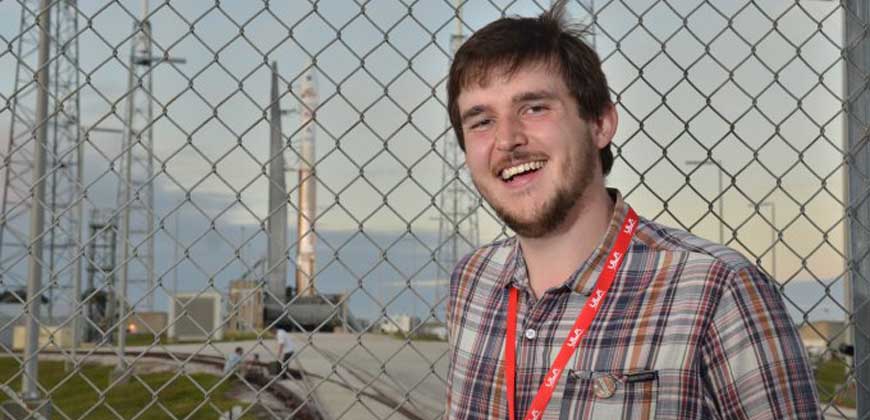CU-Boulder student's fieldwork is out of this world

What work do you do with the MAVEN mission?
I work on the Ultraviolet Imaging Spectrometer experiment on MAVEN. Our instrument provides a global view of the atmosphere as opposed to the local view provided by the other instruments. My job is to help analyze the hydrogen airglow that we will observe. By looking at how much sunlight bounces off of the hydrogen in the atmosphere, we can see how much hydrogen is leaving the atmosphere today and escaping to space. Because the hydrogen we will look at comes from water much lower down in the atmosphere, the work I do can tell us how much water is leaving the planet today, which can help us understand how much water Mars may have lost to space over its lifetime. This will help us answer one of the most important questions about Mars: whether escape to space could have transformed the planet from its warm and wet early state to the cool and dry planet we know today.
Why did you choose CU-Boulder over another university?
CU is almost unique in its capability to conceive, build, and fly instruments to other planets. The Laboratory for Atmospheric and Space Physics at which I work has sent instruments to every planet in the solar system: only government labs can make the same boast. All of the other universities I applied to for graduate study told me not to work on missions until they had already arrived and were returning data. At CU, professors in APS and scientists at LASP are actively pushing the frontier of exploration forward, conceiving and building the missions that will rewrite our understanding of the Solar System.
If a prospective student asked you about the most interesting thing or things you've done at CU, how would you respond?
If we judge “interesting” or “cool” by the standards of then 10-year-old Mike Chaffin, working on a NASA mission going to Mars is possibly the coolest thing I could do, next to becoming an astronaut or running a dinosaur rodeo. I get to work with extremely intelligent people who are dedicated to solving the planetary mystery of what happened to the water on Mars. As a necessary part of this work, I've gotten to travel to collaborate with scientists from around the country and around the world, in California, Florida and France. Getting paid to study Mars and working with an international team of brilliant scientists has been an unbeatable experience.
What drew you to astrophysical and planetary sciences?
As an undergraduate student, I studied physics intending to be a theoretical physicist or a string theorist, but I got tired of not having any real measurements to compare with. With planetary science, we are actually traveling to other planets in our solar system today, which is as close to magic as I think you can get in the real world. We're learning things about our solar system and about the universe that people have wondered for as long as we've been looking up at the sky. The other planets in our solar system are eerily similar but vastly different from Earth. By studying them, we can begin to understand the development of planets in general, instead of being restricted to the possibly unique evolutionary path of the Earth. I can't think of a more exciting way to spend a career!
What do you plan to do after earning your degree?
I hope to get my Ph.D. in the next year and continue to do exciting scientific work on MAVEN for as long as it is returning science data from Mars. After that, I'd like to continue working as a planetary scientist at a small liberal arts college, sharing my passion for the Solar System and the universe with talented undergraduates while maintaining strong connections with the planetary science community at research institutions throughout the United States and abroad.
- See more at: http://www.colorado.edu/news/features/maven-q-michael-chaffin#sthash.rmE...




